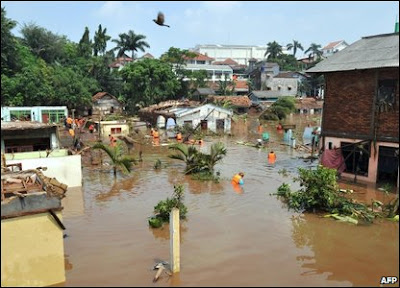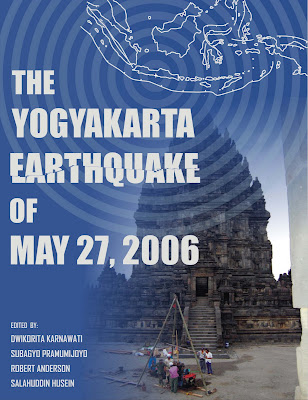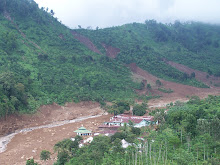Torrential rains Thursday raised the level of a reservoir behind the dam to almost 55 yards above capacity, apparently because the gate leading to the spillway was too small. The dam was overtopped, eroding the dam surface and resulting in a breach 70 metres (230 ft) wide at around 2 am on 27 March local time. Cracks were reportedly visible in the face of the dam embankment from around midnight. The dam operators apparently sounded a warning siren shortly before the dam failed. A surge of water and debris several meters high was sent into the town of Cirendeu, washing away cars, houses and a brick-built bridge.The flood hit while most of the population was asleep and left standing water up to 2.5 meters (8.2 ft) deep. Many people remain trapped in the town with around half of the townspeople taking to their rooftops to avoid the floodwater. The flood also submerged five power terminals cutting drinking water supplies to the nearby suburb of Lebak Bulus.
Emergency repairs to the dam structure are already underway and the government has begun inspections of similar dam structures.

 Image sources : BBC news
Image sources : BBC news






